Three Royal Navy warships have been outfitted with the Naval Strike Missile (NSM), with further rollouts to depend on the work following the Strategic Defence Review, according to a government statement.
In response to a written parliamentary question from Lord Agnew of Oulton, Defence Minister Lord Coaker confirmed that HMS Somerset, HMS Portland and HMS Richmond are now fitted with the Norwegian-designed weapon.
“The Royal Navy is in the process of outfitting Naval Strike Missile (NSM) to eleven of its Type 23 frigates and Type 45 destroyers in collaboration with the Norwegian Government,” said Lord Coaker. “These missiles will provide a potent new surface-to-surface maritime and land strike capability for the Surface Fleet.”
He added that “HMS SOMERSET, PORTLAND and RICHMOND are now fitted with NSM,” and confirmed “HMS RICHMOND is part of Operation HIGHMAST, accompanying HMS PRINCE OF WALES as part of the Carrier Strike Group deployment to the Indo-Pacific region.”
The government said the Strategic Defence Review “will determine the roles, capabilities and reforms required by UK Defence to meet the challenges, threats and opportunities of the twenty-first century,” and that “Outfitting further ships with NSM will be progressed according to SDR outcomes.”
More about the missile itself
The Naval Strike Missile (NSM), developed by the Norwegian company Kongsberg Defence & Aerospace, is a fifth-generation, long-range, precision strike missile designed for use against sea and land targets. It features advanced guidance systems, including GPS, inertial navigation, and a dual-band imaging infrared seeker for terminal targeting, enabling it to identify and discriminate targets with a high degree of accuracy. The missile is designed with a low-observable shape and uses sea-skimming flight profiles to reduce detection and interception probability.
The NSM has an operational range exceeding 185 kilometres (approximately 100 nautical miles), depending on launch conditions. It carries a 125-kilogram high-explosive fragmentation warhead designed for optimal penetration and lethality against a range of targets, including heavily armoured surface vessels. The missile is subsonic and utilises a solid-propellant booster for launch and a turbojet engine for sustained flight. It can perform evasive manoeuvres in the terminal phase, further enhancing survivability against enemy air defences.
The missile is compatible with a variety of launch platforms, including surface ships, coastal batteries, and aircraft. Its compact size and modular architecture allow for integration with both existing and future combat systems, including the Mk 41 Vertical Launching System via the Joint Strike Missile (JSM) variant. The NSM has been selected by several navies, including those of Norway, the United States, the United Kingdom, and Germany, due to its versatility, precision, and survivability in contested environments.




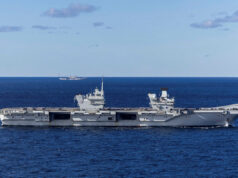

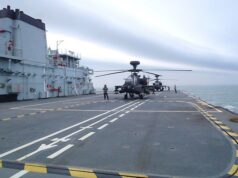

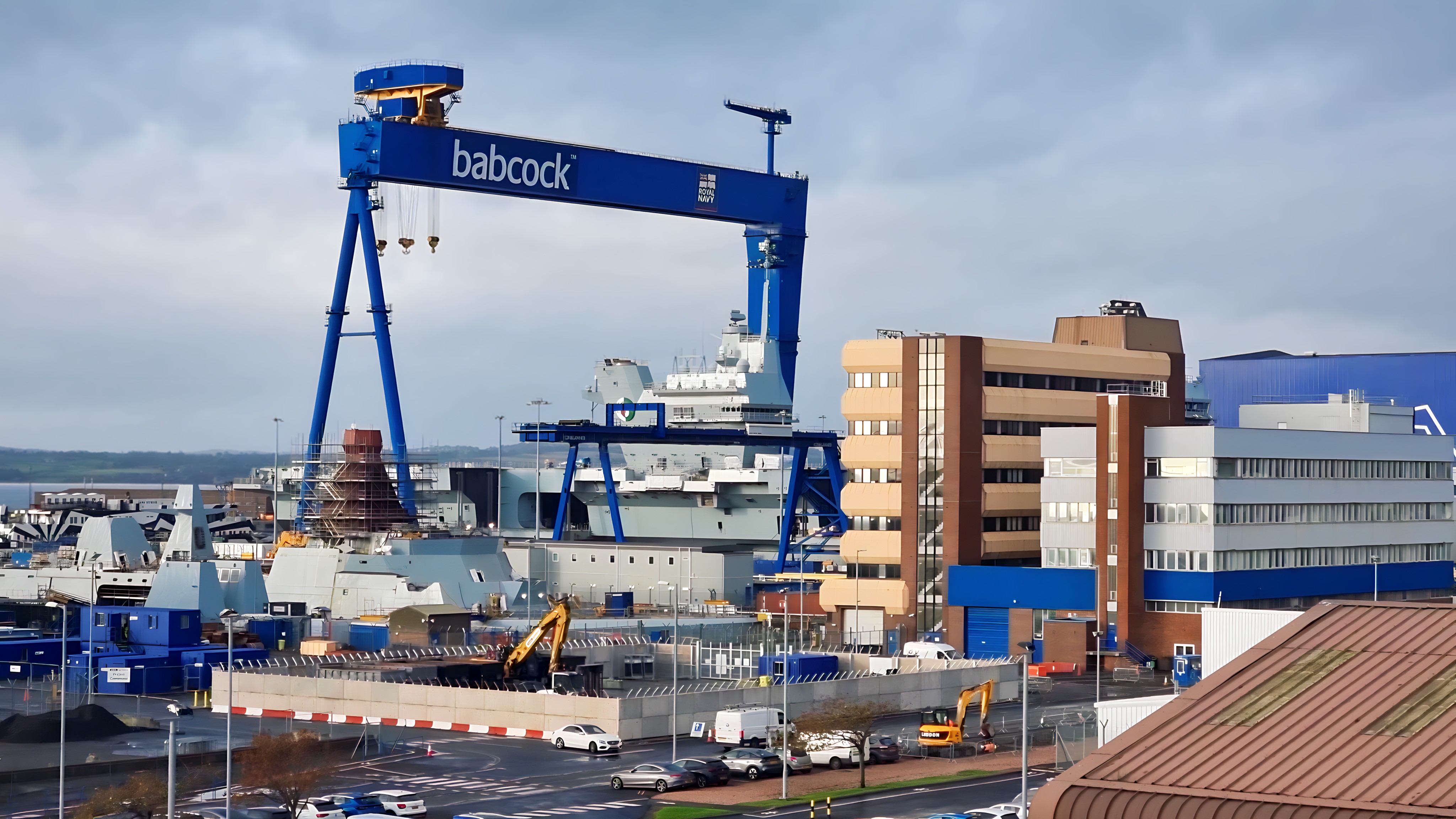
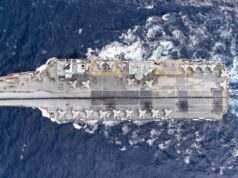


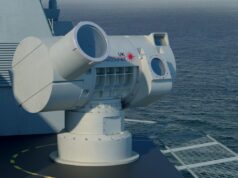

Brilliant additions to our already world class state of the art cutting edge fleet, these bring a whole new level of technological capability to our ever present global power projection abilities.
Hopefully Japan will introduce the long rumoured “Japanese Integrated Ship Missile” to their Tempests and future T32’s.
I see what you did there…
ill believe T32 when I see it.
personally I don’t see it happening while the yards are so clogged with existing contacts for T26a and T31, id like further 5 T31 ordered I’ve no doubt that the T32 won’t be a big success.
“Outfitting further ships with NSM will be progressed according to SDR outcomes.”
We’re still moving at a sluggish pace then.
SDR
Slow Defence Results ?
Sluggish Decision Report ?
Shareholders Dividend Rates ?
How about, Strategic Defence Ruse. ?
I probably shouldn’t encourage you but your ‘JISM’ concept is clearly the way forward…
To be fair, it probably says more about me than it does about you 👍
Come again ?
That shot right over my head.
Your username says it all.
Ha, ha!
It wouldn’t have of your name was Mary
Aah so the ‘outcome’ will be what, an assessment period by another group of interested parties to determine as and when any of these conclusions should be introduced and how and when? When will that be announced I wonder.
is it right that a couple of drahg0nfie systems have costings 250 mill each? and that two of them have been ordered
No.
😂
And what about a 3-5 more sets? Are the T31s going to get any, sooner or eventually? If the FCASW gets delayed the T26s can take 4×4 as on the Norwegian variant? Any buffer stock? Any future OPVs might also be able to take.
I think the plan was to transfer NSMs from T23s to T31s as each NSM equipped T23 is retired. Unless(hopefully!) funding has changed, fitting NSMs to our T23 FFGs & T45 DDGs w going to be rather slow & not necessarily for every ship. Obviously a real urgency is needed.
Hi Frank, for me it’s about having ready inventory and it signals intent. Agree that it mayn’t be needed for all ops for all locations but missiles should be in a shed close by if needed and at least FFBNW, ready to go. Especially if our likely adversaries carry heavy load outs plus have more ships and you can’t always rely on a 4.5″ or 57mm to engage. Anyway we have to get more ships in the water first and that is happening slowly.
It’s good to have, but it’s been tremendously slow progress. That’s a fit to 3 ships since November 2022 confirmation, so over 2.5 years for 3/11 ships. Over 6 years since I-SSGW was flip-flopped on.
So far as I’m aware there’s been no UK test fire, and while the weapon is proven overall the setup isn’t. Australia has similarly started outfitting NSM and has conducted a test firing, (as has the US with a LCS) – clearly seeing some value in it.
I hope that although the SDR is a handy screen to use for non-decisions or commitments that the original contract for 11 units holds true. I think the T-45’s in refit are getting set up for NSM so hopefully that continues as planned and we have some more ships equipped relatively soon. The statement ‘outfitting further ships’ might even mean above the 11 rather than just the sequence of the remaining 8.
I thought it had been test fired during the fitting in Norway?
Might be just me though, age does terrible things to the memory!
I thought I had read that there was a test firing too in Norway but maybe dreamt it. Or am I simply mis-remembering and confusing what was HMS Sutherland supposedly testing her new Sea Ceptor set up up there but being plagued with prop shaft issues never got to do so.
You are correct.
No announced RN NSM Test Firings have taken place yet.
That would require using one of the missiles we bought, which would also require buying another one. In there lies the problem.
It’s not a powerful missile. It’s got one of the smallest warheads for the asm. I hate fluff pieces.
That is an interesting statement “ “Outfitting further ships with NSM will be progressed according to SDR outcomes.”.
Says to me that possibility the last 2 sets of the 5 for the T23 may instead go to the first 2 T31 as we know these two are not going to get MK41s for a while.
Depending on the life expectancy of the remaining General Purpose Type 23s that may well make more sense. Add to that the fact that we’re only ever likely to field a maximum of 4 x Type 45 at any one time and it makes even more sense.
I’m kind of surprised that Kongsberg the manufacturer, is still making the NSM and not concentrating on just producing the JSM. Where the JSM was originally designed to be air launched and carried in the F35A weapons bay. To make it fit, it was reshaped and had the underbelly air intake redesigned to a pair of split air intakes either side of the fuselage. By redesigning the NSM in to the JSM. It meant that the missile could with an attached rocket booster be fired from a Mk41 VLS and also fit in a standard 21″ torpedo tube. But with the attached rocket booster, it could still be fired from a angled cannister. The redesign also allowed a bit more fuel to be carried thereby extending its range.
Kongsberg have just opened a new missile factory near their headquarters at the Arsenalet industrial park. They will be building both the Naval Strike Missile (NSM) and JSM and possibly even Halwitt’s Japanese Integrated Ship Missile (JISM).
I mention this because my cousin works there. I visited recently, and I have to say – Skollenborg is a fantastic place.
They’re doing the same down here in Newcastle north of Sydney. Good source of stock for the RAN, USN and NZ, if they will ever upgrade their frigates…lol
Hopefully the RNZN will get their hands on some JISM soon 👍
Yes, NZ also talking about upgrading its ships, greater lethality and all that, yet their two Anzac frigates have never had any ashms on their foredeck. They should be able at least to have 2×2 or 2×24 at a squeeze. Meanwhile and recently three Chinese naval vessels, two heavily armed, sailed calmly down the miidle of the Tasman Sea and around Australia. Thinl there’s a need to have a bit more muscle and show intent. JSM for the P8s too. Both missiles being made in Newcastle, just across the ditch.
Morning DB, hasn’t Kongsberg teamed up with a German company for a heavy weight successor to the NSM? Sorry I can’t remember names.
Just did a google. “SuperSonic Strike Missile (3SM) Tyrfing”
From the blurb I’ve read, they want the weapon to still fit in the F35’s weapons bay. If this is the case don’t expect it to have a long range. The images shown of the concept point towards a high supersonic speed (Mach 3+). Which will require a lot of fuel to sustain it at those kind of speeds,
*2×4 not 2×24!
DavyB
A couple of possible reasons come to mind.
1/ NSM may be cheaper to build.
2/ if JSM requires a seriously different integration effort or doesn’t fit in NSM launcher, then existing customers that have already invested heavily might not be too happy if production is stopped on what is still an effective modern missile.
What I don’t understand is why the JSM dual mode seeker has not been back ported to NSM already. Konsberg have said they will. USN have said they want it. But it doesn’t seem to have happened (or have I missed it?).
Not having the BAe RF seeker on NSM, may be down to available space, or more likely the customer needing to agree a contract to upgrade the missile. On newer weapons could it come as part of an options list?
The RF Seeker, does slow the weapon to hunt for its targets without constant data-linking to the launch aircraft. Thereby removing the need for the aircraft to stay fairly close. The RF seeker should allow the weapon to get in the area of the ship based on triangulating the received signal strength. Then letting the IR seeker do the terminal stuff, such as properly identifying the target, in case it’s amongst other ships.
I saw artwork for a submarine launched (by capsule from torpedo tube) version of the NSM/JSM. Is that going ahead? It would be handy for the Astutes & Aukus.
Should buy JSM for F35B and potential F35As. Seems like spear 3 and FC/ASW are still a long way off if indeed they are ever actually integrated on F35s. Supplements spear 3 regardless and Tempest is still 15 years away for stealthy FC/ASW carry.
The issue is JSM is not integrated onto F35 yet..infact or will not be until about the same time spear 3 is
In the meantime F-35s look great at airshows. Beginning to think we should invest in articulated Lorries with mock bungalows with drones integrated in their roofs. Stealthy, cheap, automated and far longer range and ready now. Better still you can get the target Countries to actually drive them to the targets for you.
To be honest the Uk just needs to hold its nose and make a purchase of GBU-39 f35 can take a lot of them and they have a range 111km
I thought the US is currently doing it with the F35C?
It’s all block4 work… like all the complex guided air to ground missiles..they are doing the initial intergration work..but final operational capability will happen with block 4 role out…essentially block 4 is blocking every complex weapon for the f35..until that is sorted its guided glide bombs.
Depending on, maybe, budget permitting, if the economy allows…and on and on it goes. What a cracking defence review.
We should give the MoD the benefit of the doubt, I do value the work they do. Maybe we shouldn’t be too cynical?
That said… a quick Google search says otherwise.
1. Aircraft Carrier U-turn (F-35C vs. F-35B)
• Issue: In 2010, the UK planned to switch from the F-35B (short takeoff/vertical landing) to the F-35C (catapult-launched) variant to save costs and improve capability.
• Failure: After discovering the massive cost and technical issues involved in retrofitting the Queen Elizabeth-class carriers with catapults and arrestor gear, the MoD reversed the decision in 2012—at a loss of over £100 million.
• Impact: It delayed full carrier capability and wasted taxpayer money.
⸻
2. Ajax Armoured Vehicle Program
• Issue: The Ajax vehicle program was meant to modernize the Army’s reconnaissance capability.
• Failure: The project has been plagued by vibration issues, noise problems, and delays, with troops unable to operate the vehicles safely.
• Impact: Over £5.5 billion allocated, and still not fully operational as of 2025. It has become one of the MoD’s most notorious procurement failures.
⸻
3. Nimrod MRA4 Cancellation
• Issue: The UK planned to upgrade its maritime patrol aircraft with the Nimrod MRA4.
• Failure: The program was canceled in 2010 after spending £3.4 billion—with none of the aircraft entering service.
• Impact: It left a major capability gap in the UK’s anti-submarine and maritime surveillance forces until the US-built P-8 Poseidon was introduced years later.
⸻
4. Defence Estate Mismanagement
• Issue: The MoD has long been criticized for inefficient use of its vast estate portfolio.
• Failure: Delayed sales, poor maintenance, and lack of strategic planning have cost hundreds of millions. Plans to consolidate and modernize estate infrastructure have been repeatedly delayed or watered down.
• Impact: Wasted funds that could have been reinvested into frontline capability.
⸻
5. Recruitment & Retention Problems
• Issue: Despite outsourcing recruitment to Capita in 2012, the Army consistently failed to meet recruitment targets.
• Failure: The online application system was deeply flawed; it took some applicants months to get processed.
• Impact: Chronic under-manning in several branches and growing concern over long-term force readiness.
⸻
6. Delays to Type 26 and Type 31 Frigates
• Issue: These programs are key to the future of the Royal Navy.
• Failure: While the designs are promising, the slow pace of shipbuilding and delays in delivery mean potential capability gaps as older ships retire.
• Impact: The surface fleet remains stretched, especially with growing global commitments.
⸻
7. Budget Black Holes
• Issue: The MoD has frequently faced scrutiny for unrealistic budgeting.
• Failure: Reports from the National Audit Office have regularly flagged multi-billion-pound shortfalls between planned capabilities and available funding.
• Impact: Cuts, delays, and re-scoping of vital programs have become routine.
Damning isn’t it, mind you the carrier debacle didn’t really delay their service introduction as the F-35s weren’t really there to operate from them. Indeed had the got EMALS they wouldn’t even been able to have launched them years after they were actually in the water if the Bush’s are anything to go by. Years delay to launching aircraft at all and F-35s even longer before they risked them.
Wasn’t one of the reasons we stuck with the B (at the time) was because it would reach FOCalot quicker for us?
At last, a sensible post highlighting the tip of the Iceberg.
“Where did all that bloody Ice come from”? (Captain Edward J Smith.)
Though it feels ‘simple’ now, the day will come when they see the value — and you’ll be remembered for it…
Sea Harrier still being operated by US. 2010 Cameron sold all 77 UK Sea Harriers to the US.
Since 1979 – 2025 = 46 years
Tory Governments = 32 years.
Labour Governments 14 years.
Tory Governments have slash and cuts to UK Military.
Thanks for the info… I didn’t think ‘halfwit’ was capable of finding a partner but happy to be proven wrong.
“Accomplice in nonsense“
Not totally correct.
Sea Harrier was cut long before, it was the remaining Harrier GR9s that were sold to the US.
And much of that force, and their base, had been chopped and announced closure long before the Tories came to power in 2010.
On carrier delays, 1 billion was added pre 2010 by Labour DS Hutton not spending promptly.
Beware political bias here, both main parties have been dreadful.
Sadly the Sea Harrier had reached the end of its development life. The airframe was based on the GR1/3. Which meant the engine cavity couldn’t take the Pegasus engines the GR5/7/9s used. It’s a pity as BAe did try to sell a modification for tge Sea Harrier, with a new wing based on the original “Big Wing” design.
It would have allowed more fuel to be carried as well as matching the wing hard points of the GR5. But without the engine upgrade it would have severely suffered when operating in hot/high environments.
The Mk2 Harrier, ie the GR5, 7 and 9 still had plenty of life left. Though in today’s air and strike environment. It would have be highly susceptible to being spotted by radar.
@JJ.
I resemble that remark.
(Would have added a down vote but apparently it was removed some time back).
PS, only joshing.
PPS, Alexa, bring back the up vote feature.
Thank you. Exactly by far the majority and deepest cuts imposed by the Tories.
Labour, only 11 months into government are trying to fix the rot.
Most of these to be fair are very much political decisions..made by elected politicians, who were elected by the voting public of this fine nation…in the end whos to blame. Why why why…
1)Why was the programme cut or delayed or not efficient : for in year savings to keep the MOD within it annual budget which was to small and kept being cut
2)Why was the MOD budget to small: because the treasury allocated it
3) Why did the treasury allocate a smaller and small budget to the MOD: because it needed the money to spend on the government priority programmes
4) why did it need to spend money on priority programmes : because the executive told it to spend it in that way
5) why did the executive tell the treasury to allocate money in that way: because its what the electorate demanded and voted on and they would loose votes and the next election if they did not…
Essentially if at any time in the last 34 years the public had turned around they would only vote for parties that priorities defence then the list would not exist..
To be fair, that was just a quick Google search after a few beers.
I take your point. Still, there comes a point where blaming politicians only gets you so far. For me, institutions like the MoD, NHS, and the police should be held to a higher standard.
Take the military, ifsomeone has spent over 30 years in the Army, you’d expect them to have a clear vision for its future. But too much energy seems to go into leaving a “legacy” at the top level.
Chief constables don’t try to reinvent the wheel, yet once someone becomes a General, it’s as if they feel compelled to steer the Army in a whole new direction?!
Oh come on, the carrier one B to C and catapults was David Cameron an entirely politically inspired “upgrade” without any concerns for practicality
🥱 try and tell us something that we don’t know.
All of these have been debated to death a thousand times or more on here. 🤦🏻♂️
You always have to spoil things 😊 . But what you say is very true sadly , hopefully we get this NSM sooner rather than later witch will give the RN more punch has many of our ships have been unarmed for far to long .👍
200 km (110 nmi; 120 mi) NSM
or
250 km (130 nmi; 160 mi) NSM 1A
>300 km (190 mi; 160 nmi) (2025)
Which one has RN bought. NSM or NSM 1A ?.
If (as I expect) the Anglo-French ASM won’t be in service sny time soon, maybe buy some JSMs for the Mk41 VLS on T26/31?
Maybe quad-packed VL version of Spear 3 too, given delays in integration with F35B.
Italy is buying JSM foe uts F35Bs, but it’s only external carriage only and no idea when it’s integration date, maybe not any any quicker than Spear3 though
If the main role of the T26 will be ASW they might want to keep the mk41s for anti-sub Asroc type weapons, and maybe TLAM, CAMM-MR. Cannister NSMs can go on the roof which was shown on the Norwegian T26 model and RCAN and RAN ships.
What does he mean “Outfitting further ships with NSM will be progressed according to SDR outcomes.” – I take this to mean the previous announcement by Wallace is no longer set in stone ie it’s subject to SDR. So T45s remain without any ASuW capabilities.
It is good to see our frigates and destroyers getting some teeth again! I recall seeing many pictures of UK ships facing off against Russian ships with NO ASM capability. It made the UK look weak and was bot a deterrent toRussian or Chinese agression. Good job fitting these missiles. ALL the T45 and T23 ships should get this upgrade.
As long as our civil servants have as one of their main appraisal targets the saving of money against already established financial targets then we’re going to get second rate armed forces.